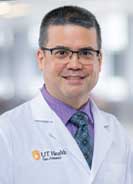The Centers for Disease Control and Prevention estimates that nearly 17,000 babies are born in the United States each year with a ventricular septal defect (VSD). Small defects often close on their own, but surgery may be recommended for larger VSDs.
The heart contains four chambers—two atria and two ventricles. As part of normal fetal development, the wall between the two ventricles, called the ventricular septum, typically forms by eight weeks after conception. In some cases, though, a hole remains after birth, which is called a ventricular septal defect (VSD).
Why Surgery Is Needed for a Ventricular Septal Defect
Ventricular septal defects are one of most the common surgical type of congenital heart defect. In most cases, the defect is small enough that it doesn’t cause disruptive symptoms or health issues. Small to moderate defects may even without surgery.
Larger defects allow blood to travel from the left ventricle through the defect (hole in the ventricular septum) and into the right ventricle, causing oxygen-rich blood to mix with oxygen-poor blood. This can cause strain on the heart and lungs by forcing them to work harder, leading to symptoms such as:
- Shortness of breath
- Sweating or fatigue while nursing or eating
- Slow growth/failure to thrive
Heart surgery is recommended for children who have large defects or multiple defects to avoid damage to the lungs and heart, including a condition known as Eisenmenger syndrome.
What to Expect from Ventricular Septal Defect Surgery
If surgery is recommended to repair a ventricular septal defect, a pediatric heart surgeon can step you through exactly what to expect from your child’s surgery.
During surgery, the defect in the septal wall will be repaired, either by stitching the hole shut or by using a patch made of a synthetic material or part of the body’s own tissue, the pericardium to close the defect.
Ventricular septal defect surgery is an open-heart procedure with the assistance of a heart-lung bypass machine.
In most cases, ventricular septal defect closure provides a permanent cure for the defect, a relief of symptoms, and improved heart and lung function.
Helping Your Child Recover After Surgery
Immediately after surgery, your child will be carefully monitored in the intensive care setting. Nurses and other clinicians will keep a close eye on his or her vital signs and be watching for signs of complications.
In most cases, you will be encouraged to have your child up and moving on the day following surgery. When you’re discharged home, you’ll be given a set of instructions to guide at-home care for your child, including signs of infection, how to care for the incision, and when and how to resume certain activities. It’s important that these instructions be carefully followed.
As your child recovers, you will have regular checkups with a cardiologist for a short time. As long as the surgery was effective and there are no complications, these checkups will become less frequent over time and your child will have no restrictions.
Pediatric Heart Care at University Children's Health
Learn more about pediatric heart care at University Children's Health.





